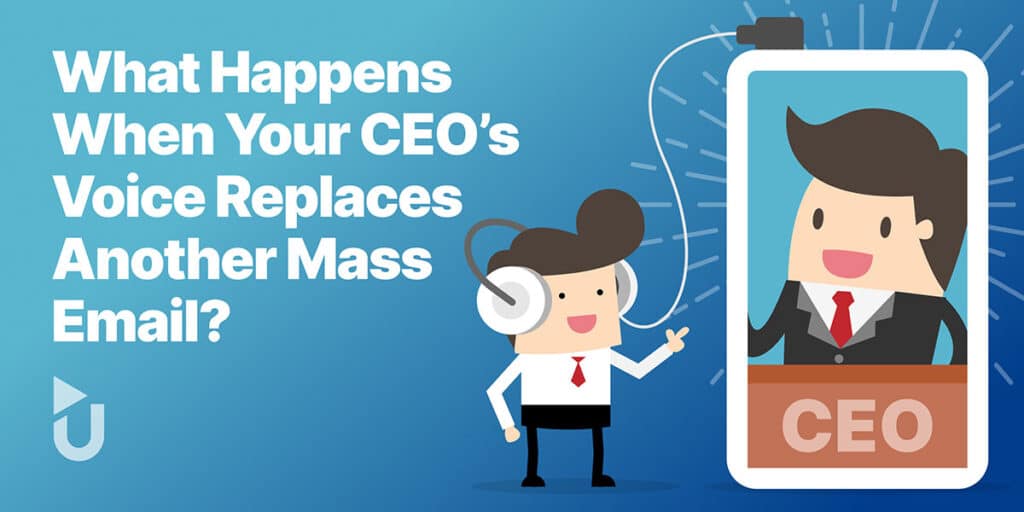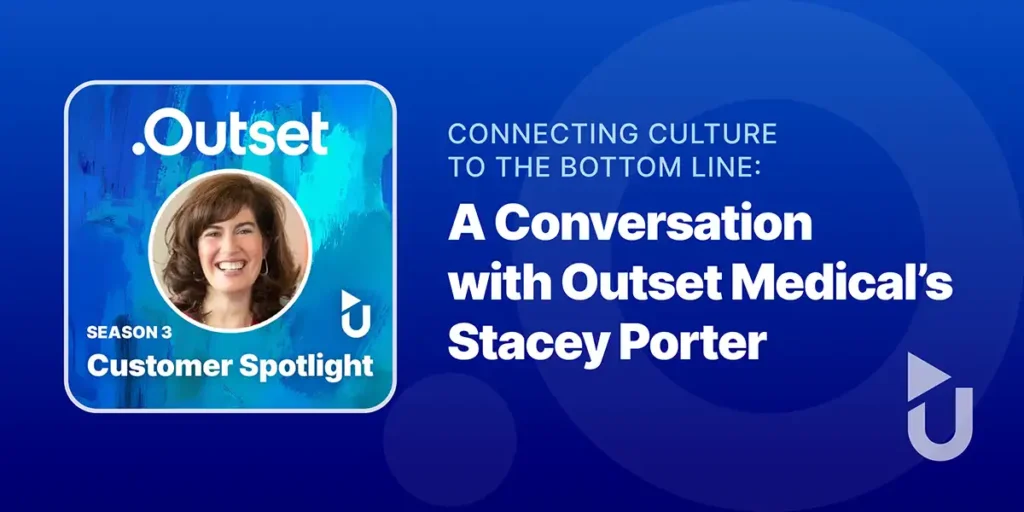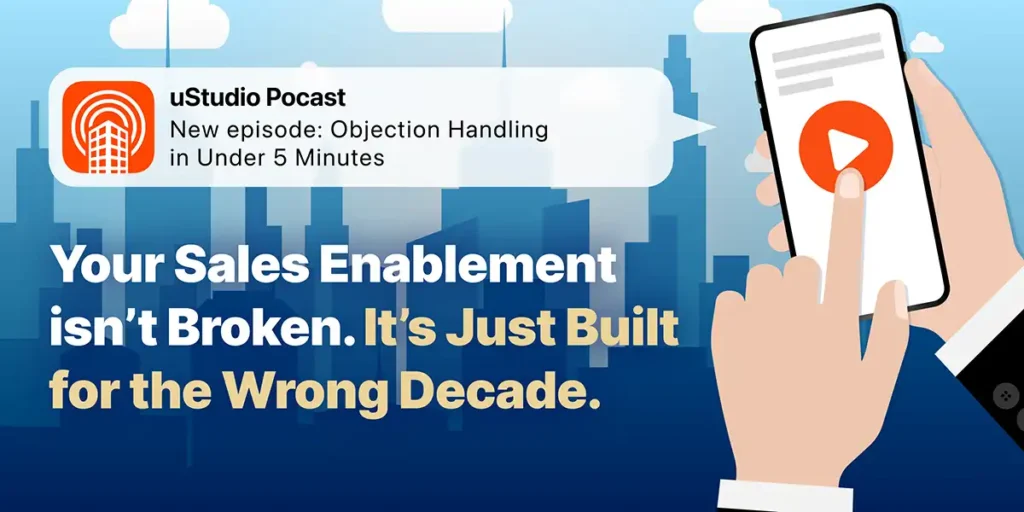Video platforms: what are they and why should you care?
uStudio Staff | Live Video, Video Platform

Many companies are recognizing the need for a platform approach to video, and they’re trying to answer important questions about the difference between video platforms over more basic player technologies. In a series of interviews with uStudio’s CEO, Jen Grogono, I invited her to answer some of those questions. Why SHOULD companies take a platform approach to video? Can’t some of them get by with only basic player technologies? Where is the world of video headed, and how does a platform approach set companies up to win in the new video world order? Watch Jen’s responses in the playlist below or read on for the highlights.
Tell me about your vision. Where is the world of video heading?
One of the great dreams of business is that video can be used across the enterprise as easily as e-mail is used. Anyone in any department at anytime can simply bring video into their application or their business process without having to call someone. A video can simply be uploaded and shared, and all of those really heavy core processes that have to happen behind the scenes just happen and the user has no idea.
Increasingly we’re seeing a lot of companies move to core business process integration. I want video in my customer support process. I need video to be part of my sales process. Training inside of my company must incorporate video because that’s where I get the return. As those businesses move towards more integration and more business process automation, video becomes strategic at that point. You absolutely need to understand how to optimize video. I think we are moving toward a world in which video becomes seamlessly integrated into core business processes, in many cases via applications. But in order for companies to do that in a strategic and optimized way, those video-enables applications and processes have to run off of a shared video platform.
So it sounds like we’re moving towards a world where business applications will all be video-enabled and powered by centrally managed video platforms. Why is a platform approach important to managing video in that type of world?
Video is not really giving a business value if it’s not delivering agility or faster time to market or measurable improvement across core business metrics. To achieve that value – that speed and agility and those results — you have to have a platform-first approach. Companies need complete freedom from any single video application, from any single video player, or any single CDN or storage environment or infrastructure. They need complete flexibility and control over every aspect of the video life cycle, from the low-level services, storage, compute, transcoding, and CDN layers of video management, all the way up to the end-user applications that make use of that video.
At uStudio, we allow customers to build whatever they want on top of our video platform and hook whatever they need to in the back end. By doing this, by taking this platform approach, we remove all the friction that exists between the use of video and the ROI of that video. By contrast, companies who aren’t thinking about video holistically at a platform level – in terms of all of the business and end-user applications where video needs to be shared – will find themselves trapped over time by their inability to get video to all the destinations where is has to live and all of the ways its employees, partners and end consumers wish to use it.
There are several video applications and player tools on the market, but very few true video platforms. What makes the uStudio platform a true video platform?
I think the easiest example is that 100% of our applications – the ones built by us, by developers, or by our customers – all run on top of the uStudio platform. I’d also say part of what makes our system a true video platform is that we are maintaining all of the connections between video functions and video processes. We are able to tie third party capabilities into our system without having to change the underlying components. Our system is able to understand not just how to work with the pieces we’ve built, but also pieces that have been built by others.
That is a challenge, because what you’re doing is not just connecting all of your core video functions that you’ve built. You also have to make it possible to tie in any third parties with ease. For example, if a customer comes to us and says, “I want to use my CDN”, we have the ability to, without changing our platform, configure their CDN. We need to be able to do that quickly and easily. It needs to be part of code that we’re constantly maintaining so it doesn’t break.
We started the business with an understanding that video needed to be separated. The management of the video file needed to be separated from the management of the actual distribution. Each distribution point, whether that it was a business application inside of the company or a big social media platform, video had to be managed to those destinations separately. That’s what we now have a patent on – a video platform that manages that entire video lifecycle.
What evidence do you have that this platform approach to video has been the correct one?
One of the things I’m most proud of is that our video platform is used by so many different types of customers to manage video in so many different types of ways. We’ve got retailers, we’ve got Grammy winners, we have SEC sports teams, and we’ve got massive corporations using our platform for training, marketing, corporate communications, and fan engagement to name a few.
That is exciting to me, because what it says it we built the platform right. What it says is we made the right decision when we decided to go platform-first. The pace of change in video is great, and a lot of use cases in video haven’t yet been invented yet. If we don’t build something that’s designed for change and designed for this diversity of use cases that we know about today, including the ones we don’t know about or can’t yet imagine, we’re probably not building the right thing.
A great example of this is Virtual Reality. When we founded uStudio, VR wasn’t really on anyone’s radar. But now with the explosion in this area, we are seeing devices from Oculus Rift to HTC Vive to Google Cardboard, all of which challenge the way video is processed, how players are designed, and how interactivity is enabled. The flexibility of uStudio’s video platform means we can rapidly incorporate and support those new use cases and deliver that value quickly to our customers who wish to do the same.
Can you give some specific examples of these different use cases you mention and how a platform approach makes them possible?
I think it’s hard for a lot of people to imagine that such disparate and different use cases are all leveraging the same video platform capabilities. But the reality is, the video doesn’t know that it’s a marketing video! The video doesn’t know that it’s a support video or a training video! The video is just a video. We treat that video in terms of its life cycle. It gets uploaded into the system, regardless of how and who. It gets transcoded and processed, so it can be delivered. It gets delivered somewhere, it gets watched and consumed. It gets measured. All of those core functions and lots of sub functions underneath are brought to bear on that video life cycle.
For example, Alcon Novartis, the pharmaceutical company, is using our system to manage marketing videos inside of the company across marketing teams, internationally across leads, and customers and prospects. We also have HP that’s using our platform to deliver training materials to its sales force inside of the Salesforce.com platform. A third example is the University of Arkansas that’s using the uStudio platform to power all of their live audio broadcasts of their athletics.
In each of those examples — the Alcon Novartis, HP and University of Arkansas … you’ve got extraordinarily different use cases, but still video life cycles that are being managed inside of the uStudio platform. The exact same uStudio platform that’s being used across our entire customer base.
Let’s talk about the future. What are some of the biggest trends you see in enterprise video?
On the enterprise side, one of the trends we’re seeing is this continued push toward moving everything to the cloud. Yes, there are still hybrid clouds, but we’re seeing a much greater focus on IT looking to push more and more functionality out to public clouds. The second trend we’re seeing is a lot of businesses now believe that video should be centrally managed by an IT organization that is also managing a new cloud based system. We’re seeing a lot of enterprises really embrace this notion of having video infrastructure neatly coupled with their cloud strategy, so that the compute and storage around video gets to live on this nice highly scalable cloud based infrastructure. They can then deliver video through various business applications — for marketing, customer support, sales, training, or HR — that have video tightly integrated.


